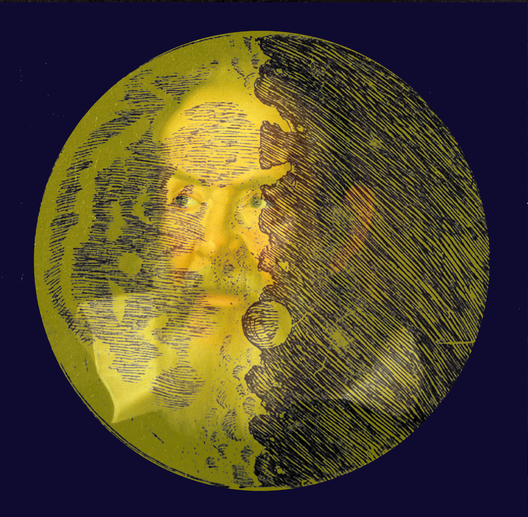Galileo Galilei1564–1642
When Galileo Galilei directed his telescope to the moon the impact of his observations reverberated throughout Europe. He described and depicted the mountains and craters on the moon, challenging the received view that heavenly bodies were perfect spheres and that surface imperfections were restricted to earth. The illustration portrays Galileo in the moon he portrayed: the drawing of the moon is derived from a woodcut in Sidereus Nuncius, published in 1610, and the painted portrait is after one by Justus Sustermans that hangs in the Rector’s office at the University of Pisa, the city of Galileo’s birth. Also four centuries ago, Galileo modified his telescope to act as a microscope and directed it to insect eyes: “he perfectly distinguishes with his telescope the organs of motion and of the senses of the smaller animals, especially in a certain insect, which has each eye covered by a rather thick membrane, which, perforated with seven holes, like the visor of a warrior, allows it sight”. What has had less impact are Galileo’s observations on observation itself, and on the inferences that could be drawn from them. He utilised phenomena of visual contrast to support many of his astronomical arguments in both real and thought experiments. His general interest in the senses was of a psychological and philosophical character; it reflected the fallacies and limits of senses and the ways in which scientific knowledge of the world could be gathered from potentially deceptive sensory appearances. His innovative conception of the relation between the senses and external reality contrasted with the classical tradition dominated by Aristotle. When Galileo considered the senses and sensation in Il Saggiatore (published in 1623) he did not share Aristotle’s faith in the veracity of the signals provided by the senses, and his approach to sensation can be seen as breaking with the medieval tradition. He famously wrote: “This is why I think that, as far as concerns the object in which these tastes, smells, colours, etc. appear to reside, they are nothing other than mere names, and they have their location only in the sentient body. Consequently, if the living being were removed, all these qualities would disappear and be annihilated”. From the viewpoint of sensory physiology, Galileo’s statement can be taken as a forerunner of Johannes Müller’s doctrine of specific nerve energies, formulated in the early 19th century. Galileo spoke at length about illusions of the senses, but this concerned the possibility of reaching false conclusions on the basis of observation. Until the time of Galileo, light and sight were not distinguished from one another because the dioptrics and the anatomy of the eye had not been adequately described. Two traditions operated in the period from Aristotle to Galileo, one of the analysis of vision in terms of optics and the other in terms of observation. The optical tradition was to break new ground during Galileo’s lifetime, due in no small part to his fellow astronomers, Kepler and Scheiner.
